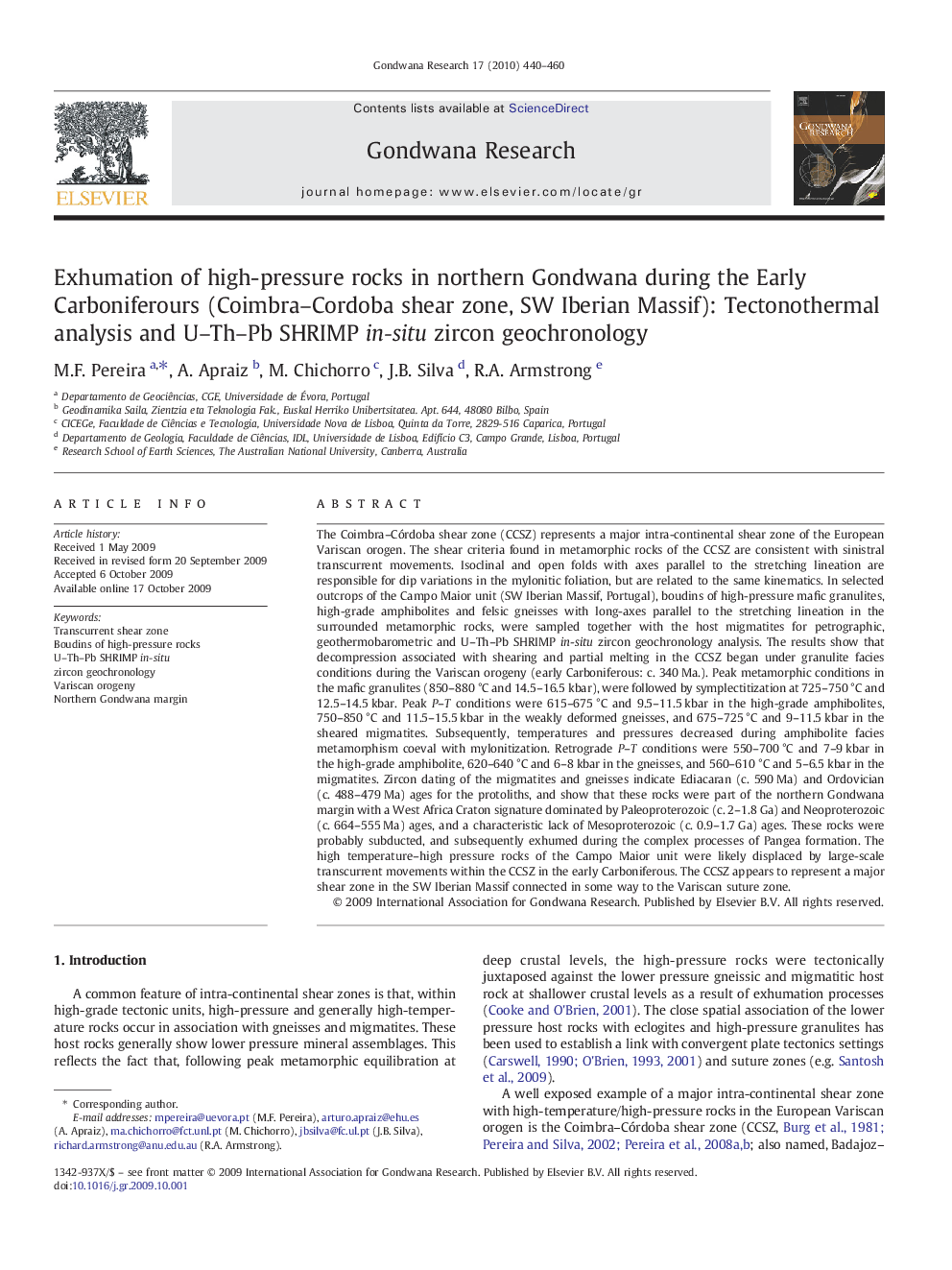| کد مقاله | کد نشریه | سال انتشار | مقاله انگلیسی | نسخه تمام متن |
|---|---|---|---|---|
| 4727243 | 1640149 | 2010 | 21 صفحه PDF | دانلود رایگان |

The Coimbra–Córdoba shear zone (CCSZ) represents a major intra-continental shear zone of the European Variscan orogen. The shear criteria found in metamorphic rocks of the CCSZ are consistent with sinistral transcurrent movements. Isoclinal and open folds with axes parallel to the stretching lineation are responsible for dip variations in the mylonitic foliation, but are related to the same kinematics. In selected outcrops of the Campo Maior unit (SW Iberian Massif, Portugal), boudins of high-pressure mafic granulites, high-grade amphibolites and felsic gneisses with long-axes parallel to the stretching lineation in the surrounded metamorphic rocks, were sampled together with the host migmatites for petrographic, geothermobarometric and U–Th–Pb SHRIMP in-situ zircon geochronology analysis. The results show that decompression associated with shearing and partial melting in the CCSZ began under granulite facies conditions during the Variscan orogeny (early Carboniferous: c. 340 Ma.). Peak metamorphic conditions in the mafic granulites (850–880 °C and 14.5–16.5 kbar), were followed by symplectitization at 725–750 °C and 12.5–14.5 kbar. Peak P–T conditions were 615–675 °C and 9.5–11.5 kbar in the high-grade amphibolites, 750–850 °C and 11.5–15.5 kbar in the weakly deformed gneisses, and 675–725 °C and 9–11.5 kbar in the sheared migmatites. Subsequently, temperatures and pressures decreased during amphibolite facies metamorphism coeval with mylonitization. Retrograde P–T conditions were 550–700 °C and 7–9 kbar in the high-grade amphibolite, 620–640 °C and 6–8 kbar in the gneisses, and 560–610 °C and 5–6.5 kbar in the migmatites. Zircon dating of the migmatites and gneisses indicate Ediacaran (c. 590 Ma) and Ordovician (c. 488–479 Ma) ages for the protoliths, and show that these rocks were part of the northern Gondwana margin with a West Africa Craton signature dominated by Paleoproterozoic (c. 2–1.8 Ga) and Neoproterozoic (c. 664–555 Ma) ages, and a characteristic lack of Mesoproterozoic (c. 0.9–1.7 Ga) ages. These rocks were probably subducted, and subsequently exhumed during the complex processes of Pangea formation. The high temperature–high pressure rocks of the Campo Maior unit were likely displaced by large-scale transcurrent movements within the CCSZ in the early Carboniferous. The CCSZ appears to represent a major shear zone in the SW Iberian Massif connected in some way to the Variscan suture zone.
Journal: Gondwana Research - Volume 17, Issues 2–3, March 2010, Pages 440–460